Partial Pilot Allocation Scheme in Multi-Cell Massive MIMO Systems for Pilot Contamination Reduction
Abstract
1. Introduction
2. Related Work
- We define a threshold value to determine the interfering users that cause severe interference at the target cell;
- We formulate an optimization problem for pilot allocation and propose a heuristic algorithm that solves this problem by maximizing the uplink throughput of users with poor channel quality;
- The performance of the proposed PPA scheme is evaluated in terms of the signal-to-interference-plus-noise ratio (SINR) and the uplink rate. The results are compared with other schemes.
3. System Architecture
4. Pilot Contamination
5. Achieved Uplink Rate under the Pilot Contamination Effect
6. Proposed Scheme
6.1. Problem Formulation
6.2. Partial Pilot Allocation (PPA)
- Only one user from each adjacent cell belongs to the same group. In other words, L-1 users are involved in each group ;
- The users which have similar orders of interference severity are grouped together. For instance, the users that generate the highest interference are labeled by . This group includes the worst-interfering users from all adjacent cells, while the last group contains those that cause the lowest interference (considering only users) at the targeted BS.
| Algorithm 1 Partial Pilot Allocation (PPA). |
| 1: : |
| 2: |
| 3: Output: |
| 4: Allocating pilot sequences for all users in all cells |
| 5: Procedure: |
| 6: Evaluate . |
| 7: Finding According to (15). |
| for each adjacent cells do |
| for all users in cell j do |
| 8: Evaluate: , |
| 9: Determining users According to (14). |
| end for |
| end for |
| 10: Classifying users into different groups: , = [ ] |
| 11: Assign the pilot sequence to the users in . |
| 12: Remaining users (i.e., ) are randomly allocated their pilot sequences. |
| 13: Users with high (in the target cell) are sharing the pilot sequence of users. |
| 14: Remaining users, in the target cell, are allocated their pilot sequences randomly. |
7. Performance Evaluation
8. Conclusions
Author Contributions
Funding
Acknowledgments
Conflicts of Interest
References
- Marzetta, T.L. Noncooperative cellular wireless with unlimited numbers of base station antennas. IEEE Trans. Wirel. Commun. 2010, 9, 3590–3600. [Google Scholar] [CrossRef]
- Björnson, E.; Hoydis, J.; Sanguinetti, L. Massive MIMO Networks: Spectral, Energy, and Hardware Efficiency. Found. Trends Signal Process. 2017, 11, 154–655. [Google Scholar] [CrossRef]
- Lim, Y.G.; Chae, C.B.; Caire, G. Performance Analysis of Massive MIMO for Cell-Boundary Users. IEEE Trans. Wireless Commun. 2015, 14, 6827–6842. [Google Scholar] [CrossRef]
- Larsson, E.G.; Edfors, O.; Tufvesson, F.; Marzetta, T.L. Massive MIMO for Next Generation Wireless Systems. IEEE Commun. Mag. 2014, 52, 186–195. [Google Scholar] [CrossRef]
- Björnson, E.; Larsson, E.G.; Debbah, M. Optimizing Multi-Cell Massive MIMO for Spectral Efficiency: How Many Users Should be Scheduled? Proc. IEEE Global Conf. Signal Inf. Process. 2014. [Google Scholar]
- Rajatheva, N. 5G Mobile and Wireless Communications Technology; Osseiran, A., Monserrat, J.F., Marsch, P., Eds.; Cambridge University Press: Cambridge, UK, 2016; ISBN 978-1-107-13009-8. [Google Scholar]
- Björnson, E.; Larsson, E.G.; Marzetta, T.L. Massive MIMO: Ten Myths and One Critical Question. IEEE Commun. Mag. 2016, 54, 114–123. [Google Scholar] [CrossRef]
- Jose, J.; Ashikhmin, A.; Marzetta, T.; Vishwanath, S. Pilot Contamination and Precoding in Multi-Cell TDD Systems. IEEE Trans. Wirel. Commun. 2011, 10, 2640–2651. [Google Scholar] [CrossRef]
- Yu, W.; Kwon, T.; Chin, C. Multicell Coordination via Joint Scheduling, Beamforming, and Power Spectrum Adaptation. IEEE Trans. Wirel. Commun. 2013, 12, 1–14. [Google Scholar] [CrossRef]
- Rusek, F.; Persson, D.; Lau, B.K.; Larsson, E.G.; Marzetta, T.L.; Edfors, O.; Tufvesson, F. Scaling up MIMO: Opportunities and Challenges with Very Large Arrays. IEEE Signal Process. Mag. 2013, 30, 40–60. [Google Scholar] [CrossRef]
- Darsena, D.; Gelli, G.; Iudice, I.; Verde, F. Design and performance analysis of channel estimators under pilot spoofing attacks in multiple-antenna systems. IEEE Trans. Inf. Forensics Secur. 2020, 15, 3255–3269. [Google Scholar] [CrossRef]
- Xiong, Q.; Liang, Y.; Li, K.; Gong, Y. An Energy-Ratio-Based Approach for Detecting Pilot Spoofing Attack in Multiple-Antenna Systems. IEEE Trans. Inf. Forensics Secur. 2015, 10, 932–940. [Google Scholar] [CrossRef]
- Tugnait, J. Pilot Spoofing Attack Detection and Countermeasure. IEEE Trans. Wirel. Commun. 2018, 66, 2093–2106. [Google Scholar] [CrossRef]
- Akbar, N.; Yan, S.; Yang, N.; Yuan, J. Location-Aware Pilot Allocation in Multicell Multiuser Massive MIMO Networks. IEEE Trans. Veh. Technol. 2018, 67, 7774–7778. [Google Scholar] [CrossRef]
- Muppirisetty, L.S.; Charalambous, T.; Karout, J.; Fodor, G.; Wymeersch, H. Location-Aided Pilot Contamination Avoidance for Massive MIMO Systems. IEEE Trans. Wirel. Commun. 2018, 17, 2662–2674. [Google Scholar] [CrossRef]
- Kim, K.; Lee, J.; Choi, J. Deep Learning Based Pilot Allocation Scheme (DL-PAS) for 5G Massive MIMO System. IEEE Commun. Lett. 2018, 22, 828–831. [Google Scholar] [CrossRef]
- Dao, H.T.; Kim, S. Vertex Graph-Coloring-Based Pilot Assignment with Location-Based Channel Estimation for Massive MIMO Systems. IEEE Access 2018, 6, 4599–4607. [Google Scholar] [CrossRef]
- Sohn, J.; Yoon, S.W.; Moon, J. On Reusing Pilots Among Interfering Cells in Massive MIMO. IEEE Trans. Wirel. Commun. 2017, 16, 8092–8104. [Google Scholar] [CrossRef]
- Ma, S.; Xu, E.L.; Salimi, A.; Cui, S. A Novel Pilot Assignment Scheme in Massive MIMO Networks. IEEE Commun. Lett. 2018, 7, 262–265. [Google Scholar] [CrossRef]
- Wu, Y.; Liu, T.; Cao, M.; Li, L.; Xu, W. Pilot Contamination Reduction in Massive MIMO Systems Based on Pilot Scheduling. URASIP J. Wirel. Commun. Netw. 2018. [Google Scholar] [CrossRef]
- Du, T.; Wang, Y.; Wang, J.; Du, Y.; Yang, L. Multi-Cell Joint Optimization to Mitigate Pilot Contamination for Multi-Cell Massive MIMO Systems. In Proceedings of the 2017 IEEE 85th Vehicular Technology Conference (VTC Spring), Sydney, NSW, Australia, 4–7 June 2017. [Google Scholar] [CrossRef]
- Zhu, X.; Wang, Z.; Dai, L.; Qian, C. Smart Pilot Assignment for Massive MIMO. IEEE Commun. Lett. 2015, 19, 1644–1647. [Google Scholar] [CrossRef]
- Al-hubaishi, A.S.; Noordin, N.K.; Sali, A.; Subramaniam, S.; Mansoor, A.M. An Efficient Pilot Assignment Scheme for Addressing Pilot Contamination in Multicell Massive MIMO Systems. Electronics 2019, 8, 372. [Google Scholar] [CrossRef]
- NGO, H.Q.; Larsson, E.G.; Marzetta, T.L. Energy and Spectral Efficiency of Very Large Multiuser. IEEE Trans. Wirel. Commun. 2013, 61, 1436–1449. [Google Scholar] [CrossRef]
- Cramer, H. Random Variables and Probability Distributions; Cambridge University Press: Cambridge, UK, 2004. [Google Scholar]
- Björnson, E.; Matthaiou, M.; Debbah, M. Massive MIMO with Non-Ideal Arbitrary Arrays: Hardware Scaling Laws and Circuit-Aware Design. IEEE Trans. Wirel. Commun. 2015, 14, 4353–4368. [Google Scholar]
- Li, M.; Jin, S.; Gao, X. Spatial Orthogonality-Based Pilot Reuse for Multi-Cell Massive MIMO Transmission. In Proceedings of the 2013 International Conference on Wireless Communications and Signal Processing, Hangzhou, China, 24–26 October 2013. [Google Scholar]
- Müller, R.; Cottatellucci, L.; Vehkaperä, M. Blind Pilot Decontamination. IEEE J. Sel. Top. Signal Process. 2014, 8. [Google Scholar] [CrossRef]
- Dai, L.; Wang, Z.; Yang, Z. Spectrally Efficient Time-Frequency Training OFDM for Mobile Large-Scale MIMO Systems. IEEE J. Sel. Areas Commun. 2013, 31. [Google Scholar] [CrossRef]
- Sesia, S.; Toufik, I.; Baker, M. Network Architecture and Protocols. In LTE-The UMTS Long Term Evolution: From Theory to Practice; John Wiley & Sons Ltd.: Chichester, UK, 2011; ISBN 978-0-470-66025-6. [Google Scholar]
- Zhu, X.; Dai, L.; Wang, Z. Graph Coloring Based Pilot Allocation to Mitigate Pilot Contamination for Multi-Cell Massive MIMO Systems. IEEE Commun. Lett. 2015, 19, 1842–1845. [Google Scholar] [CrossRef]
- Sarkar, T.K.; Ji, Z.; Kim, K.; Medouri, K.; Salazar-Palma, M. A Survey of Various Propagation Models for Mobile Communication. IEEE Antennas Propag. Mag. 2003, 45, 51–82. [Google Scholar] [CrossRef]
- Fernandes, F.; Ashikhmin, A.; Marzetta, T.L. Inter-Cell Interference in Noncooperative TDD Large Scale Antenna Systems. IEEE J. Sel. Areas Commun. 2013, 31, 192–201. [Google Scholar] [CrossRef]


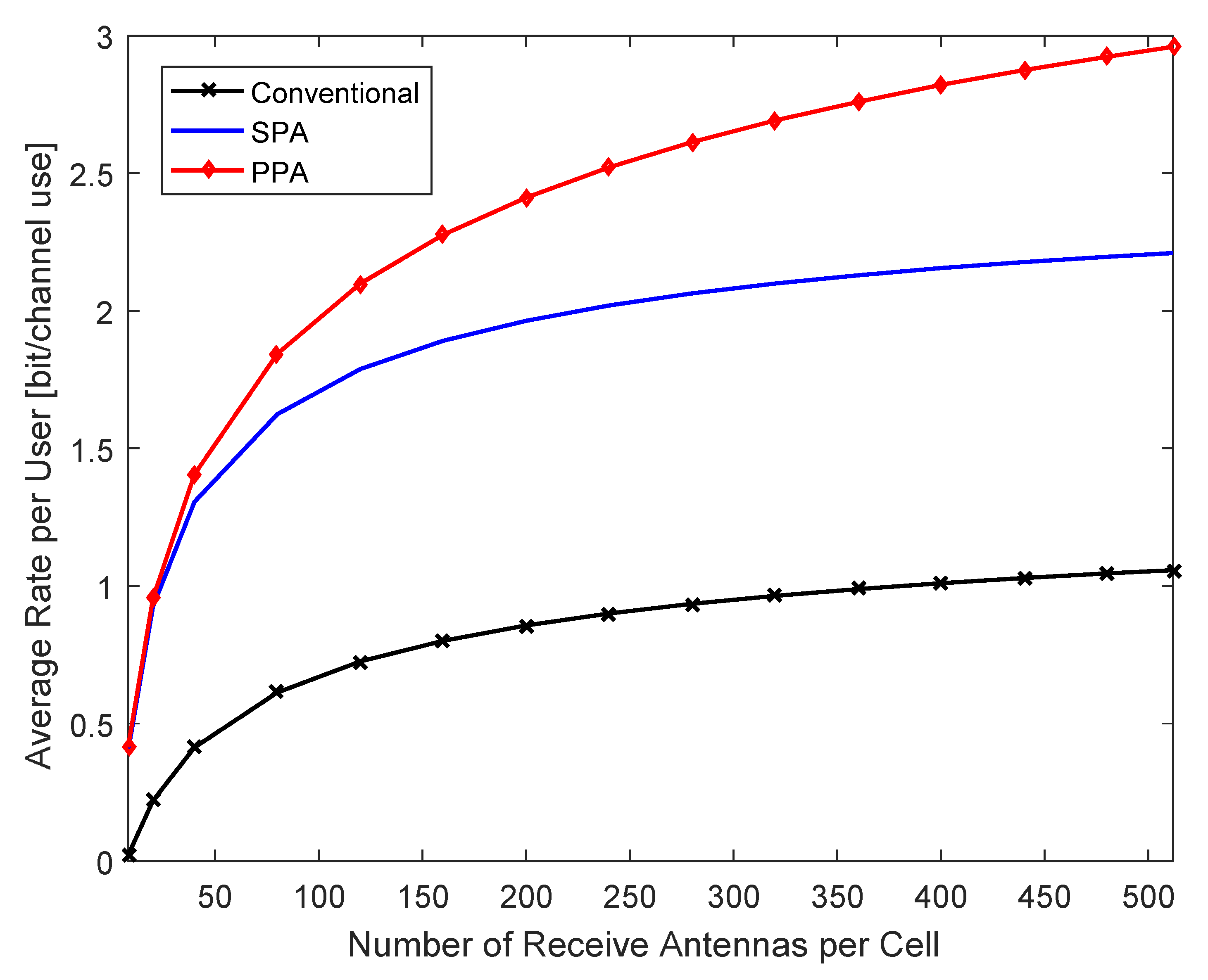
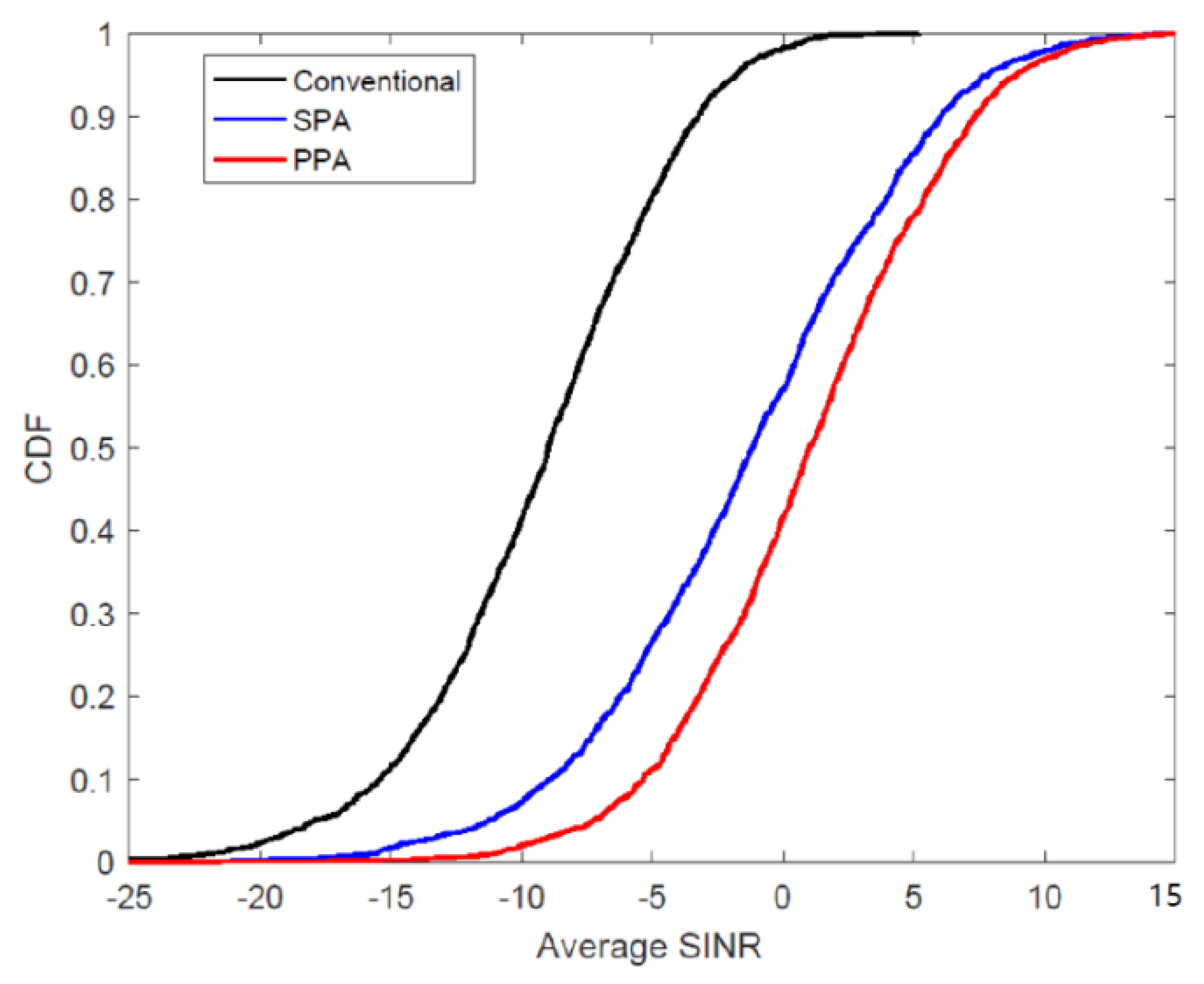

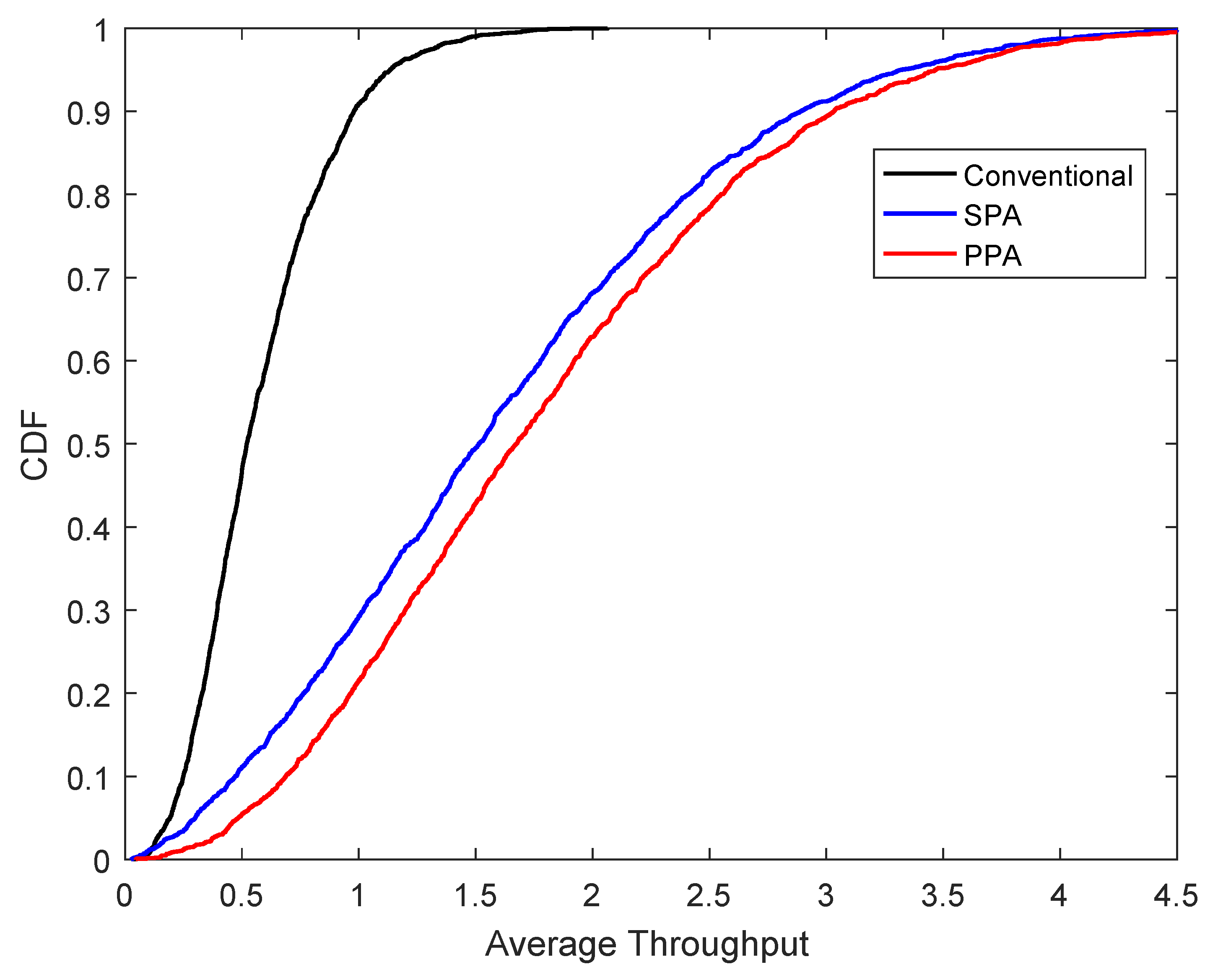
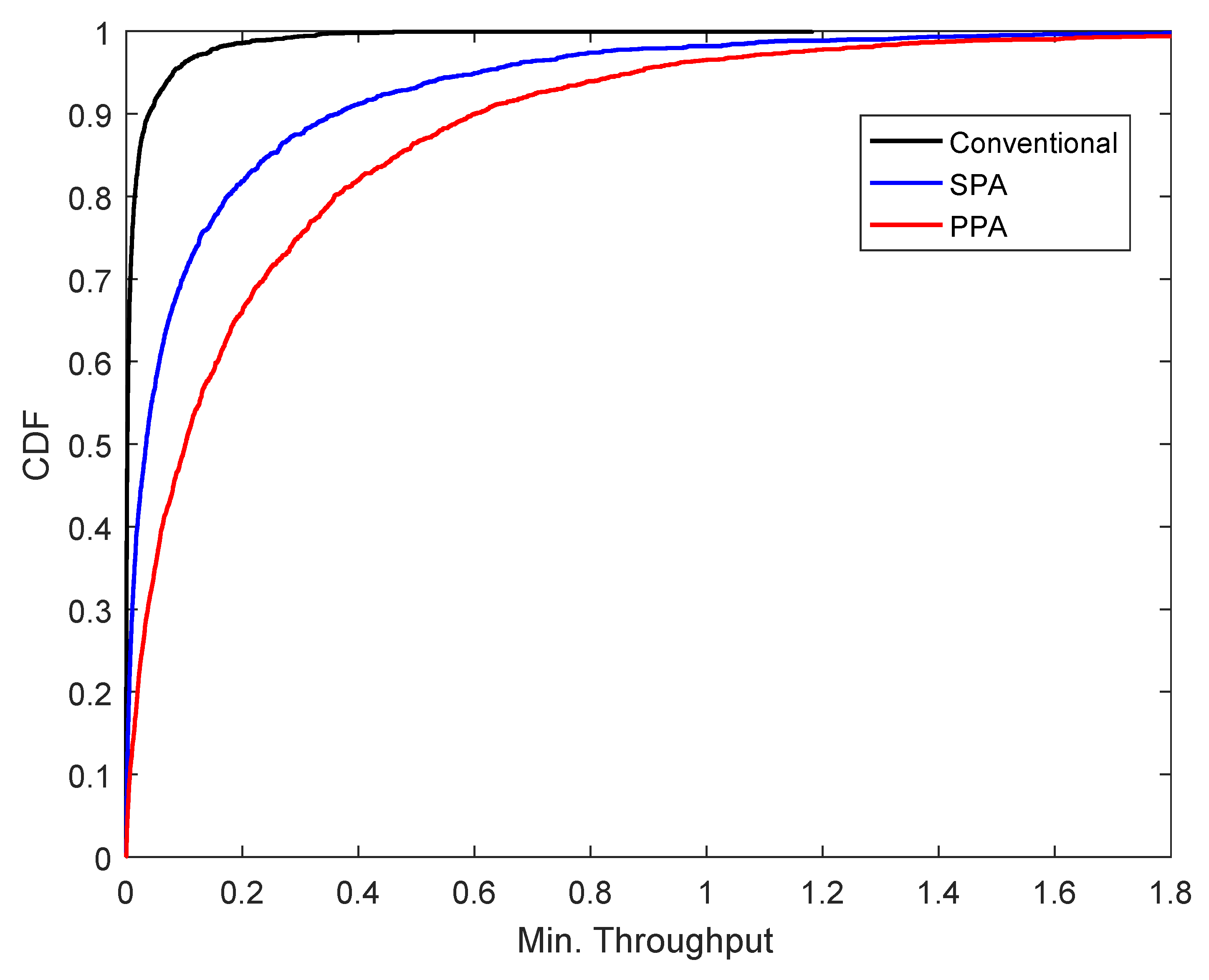
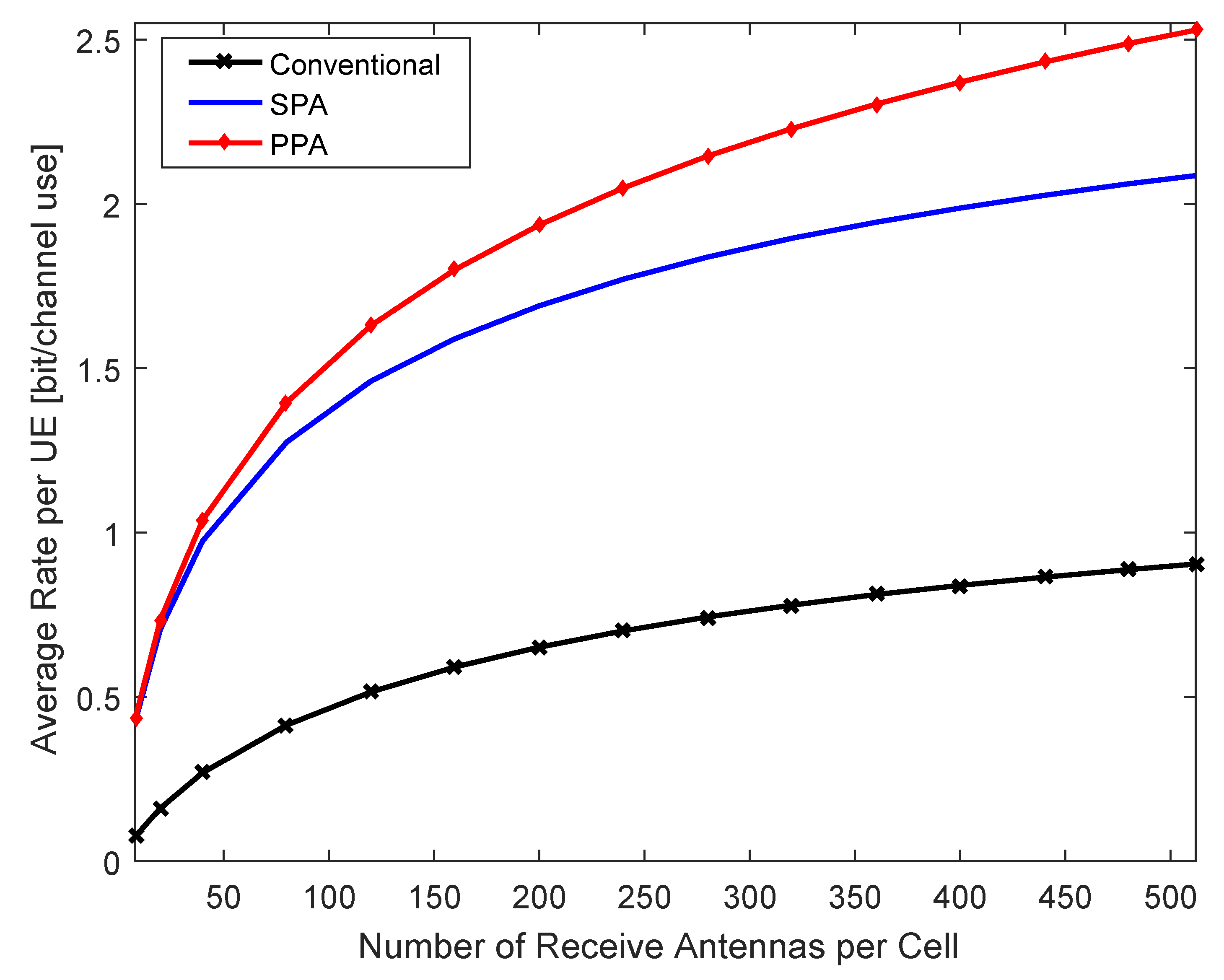
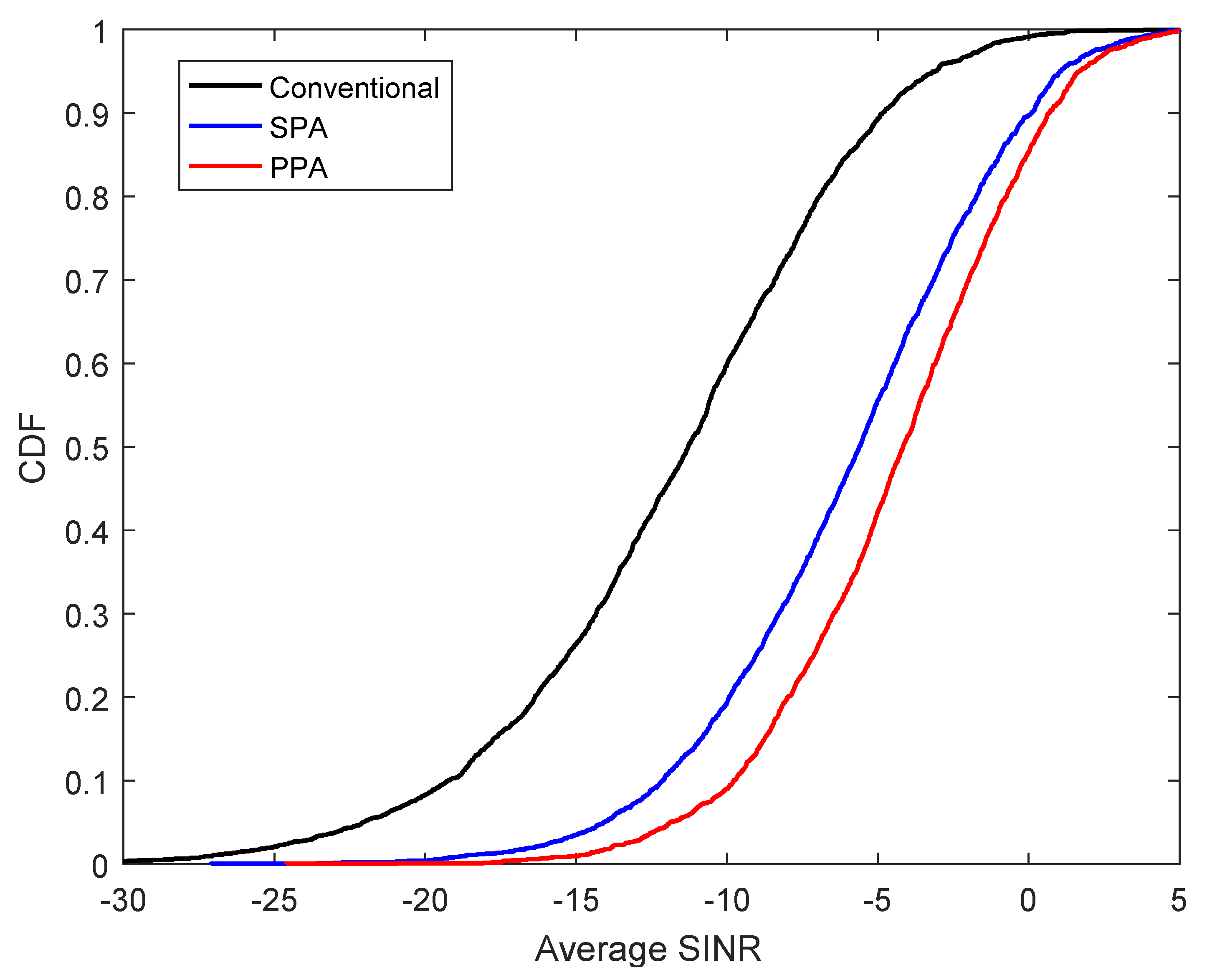
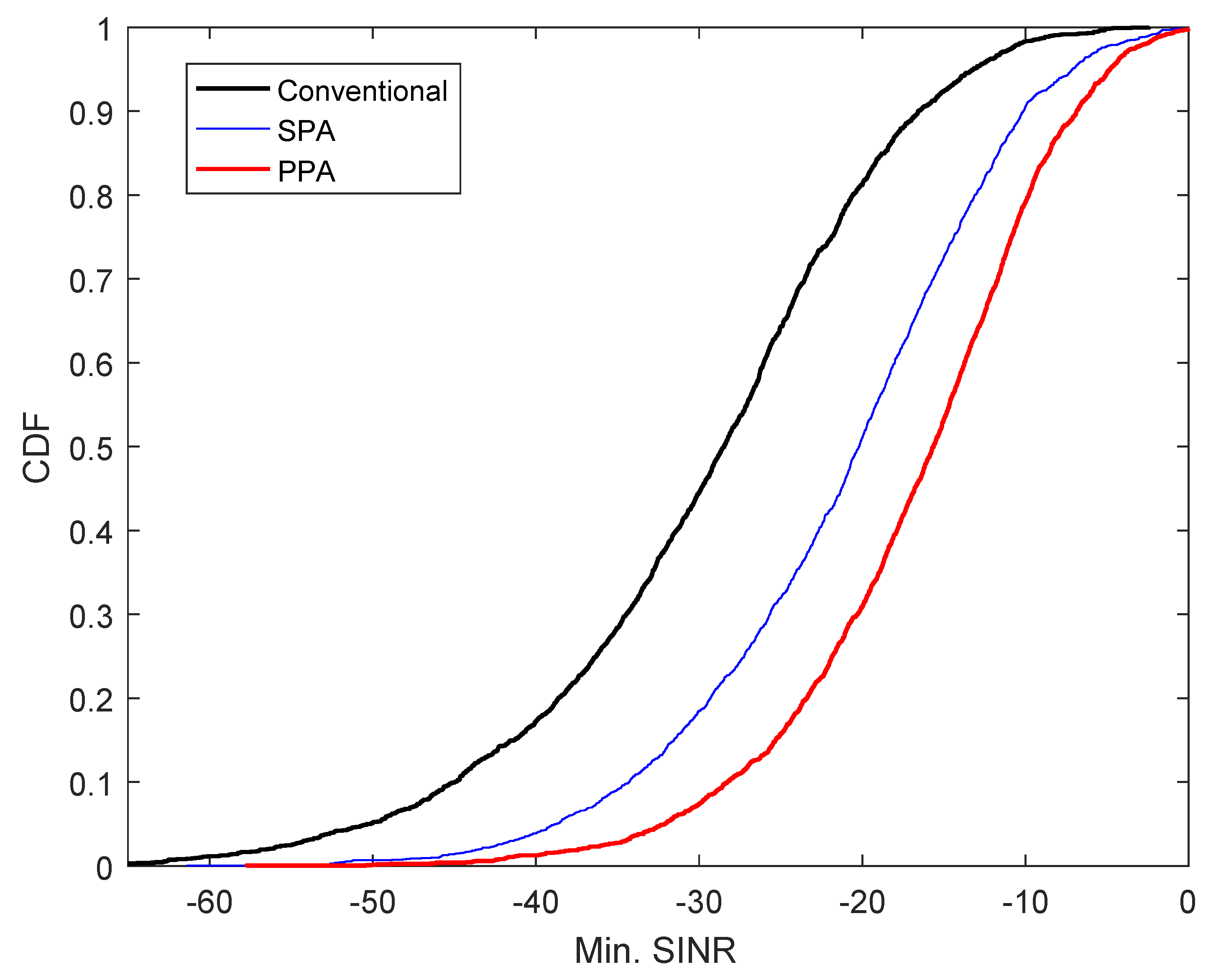



| Parameter | Scenario 1 | Scenario 2 |
|---|---|---|
| Number of users in each cell K | 8 | 20 |
| Number of cells L | 7 | 7 |
| Cell radius R | 500 m | 300 m |
| Number of antenna elements in BS M | 8 ≤ M ≤ 512 | 8 ≤ M ≤ 512 |
| Cell edge SNR | 15 dB | 20 dB |
| Path-loss exponent | 3 | 3 |
| Standard deviation | 8 | 8 |
| Thermal noise variance | −174 dBm/H | −174 dBm/H |
© 2020 by the authors. Licensee MDPI, Basel, Switzerland. This article is an open access article distributed under the terms and conditions of the Creative Commons Attribution (CC BY) license (http://creativecommons.org/licenses/by/4.0/).
Share and Cite
Al-hubaishi, A.S.; Noordin, N.K.; Sali, A.; Subramaniam, S.; Mansoor, A.M.; Ghaleb, S.M. Partial Pilot Allocation Scheme in Multi-Cell Massive MIMO Systems for Pilot Contamination Reduction. Energies 2020, 13, 3163. https://doi.org/10.3390/en13123163
Al-hubaishi AS, Noordin NK, Sali A, Subramaniam S, Mansoor AM, Ghaleb SM. Partial Pilot Allocation Scheme in Multi-Cell Massive MIMO Systems for Pilot Contamination Reduction. Energies. 2020; 13(12):3163. https://doi.org/10.3390/en13123163
Chicago/Turabian StyleAl-hubaishi, Ahmed S., Nor Kamariah Noordin, Aduwati Sali, Shamala Subramaniam, Ali Mohammed Mansoor, and Safwan M. Ghaleb. 2020. "Partial Pilot Allocation Scheme in Multi-Cell Massive MIMO Systems for Pilot Contamination Reduction" Energies 13, no. 12: 3163. https://doi.org/10.3390/en13123163
APA StyleAl-hubaishi, A. S., Noordin, N. K., Sali, A., Subramaniam, S., Mansoor, A. M., & Ghaleb, S. M. (2020). Partial Pilot Allocation Scheme in Multi-Cell Massive MIMO Systems for Pilot Contamination Reduction. Energies, 13(12), 3163. https://doi.org/10.3390/en13123163





